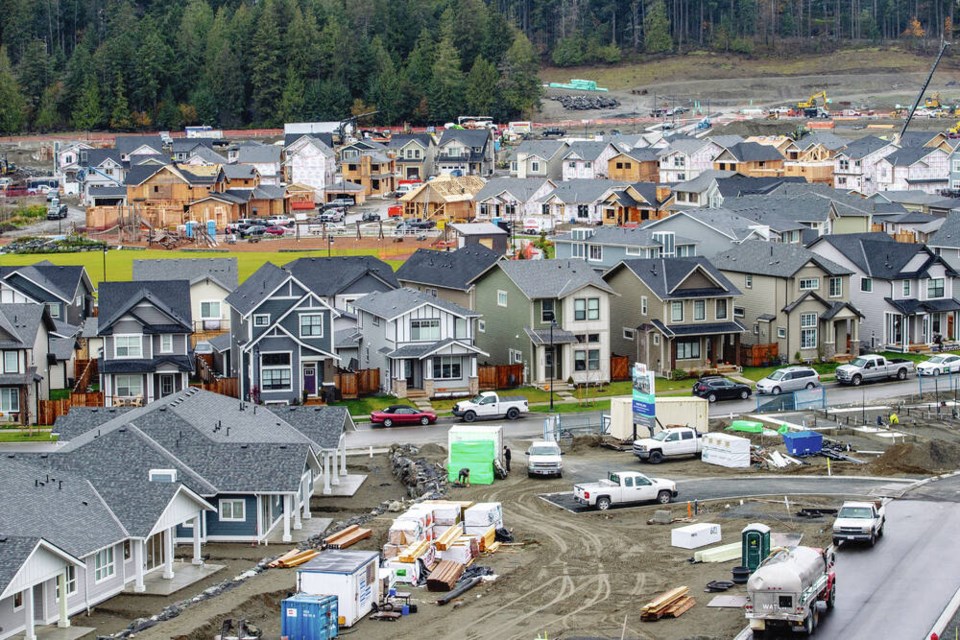Homebuilders and real estate experts are hoping the cold, hard facts on population growth released Wednesday will bring some firepower to their fight for government action on increasing housing supply.
Statistics Canada released 2021 census data that showed Greater Victoria’s population grew by eight per cent to 397,237 over the last five years, led by Langford’s 31.8 per cent growth.
Langford was ranked as the third-fastest growing community in Canada and now boasts a population of 46,584.
“When we look at the big rises in census numbers, you see seven per cent growth in B.C., seven per cent in Victoria and 32 per cent growth in Langford, that tells us that if you build it, they will come,” said David Langlois, past president of the Victoria Real Estate Board.
Of a record 4,809 new homes started in the region last year, Langford built 1,741.
“But what [the numbers] don’t tell us is the number of people that couldn’t get here, that might want to get here. So while we grew at seven per cent, what could we have grown at had we had more supply?”
A surge in population has helped fuel the white-hot real estate market, which has seen sale prices soar and inventory dwindle to record lows.
The benchmark price of a typical single-family home in the region has been over $1 million for a few months, and the benchmark price for a typical condo is now over $578,000.
Meanwhile, there are just 744 active listings on the Victoria Real Estate Board’s listings service.
Langlois said if there was more supply, they could accommodate more people.
The industry and homebuilders have been pushing government for years to reduce red tape, costs and waiting periods that they say are choking the supply of new homes.
Casey Edge, executive director of the Victoria Residential Builder’s Association, said some cold, hard statistics may amp up their argument.
“I think it helps. I think the population-growth numbers from Statistics Canada are undeniable and yeah, the onus is on governments, municipal and provincial, to try to accommodate people,” he said.
Edge said a recent report on housing in Ontario suggested new development has become too politicized at the municipal level, with elected representatives concerned about getting voted back rather than making what may be unpopular decision to allow some developments to go ahead.
“That’s clearly our situation as well in this region,” he said.
Last year, Victoria’s residential construction sector broke a 45 year-old homebuilding record with 4,809 new homes started.
Edge said that is just a start to dig the region out of a housing deficit, and they need the help of municipalities to make processes more efficient.
“The provincial government finally seems to have recognized that the issue is supply and they’re putting pressure — or hopefully will be putting pressure — on the municipalities to speed up their processes, or at least streamline them and make them more time-sensitive,” said Edge. “We can’t be operating in an environment where it takes two, three or four years or longer for a development to get approved.”
Edge said David Eby, the provincial minister responsible for housing, has hinted at withholding funding from communities that have policies that obstruct housing.
“But we haven’t seen any action yet,” he said. “And as long as there’s going to be pressures of population growth, people moving to this country, people from other provinces coming to B.C., there’s going to have to be reasonable density in each municipality.”
aduffy@timescolonist.com



